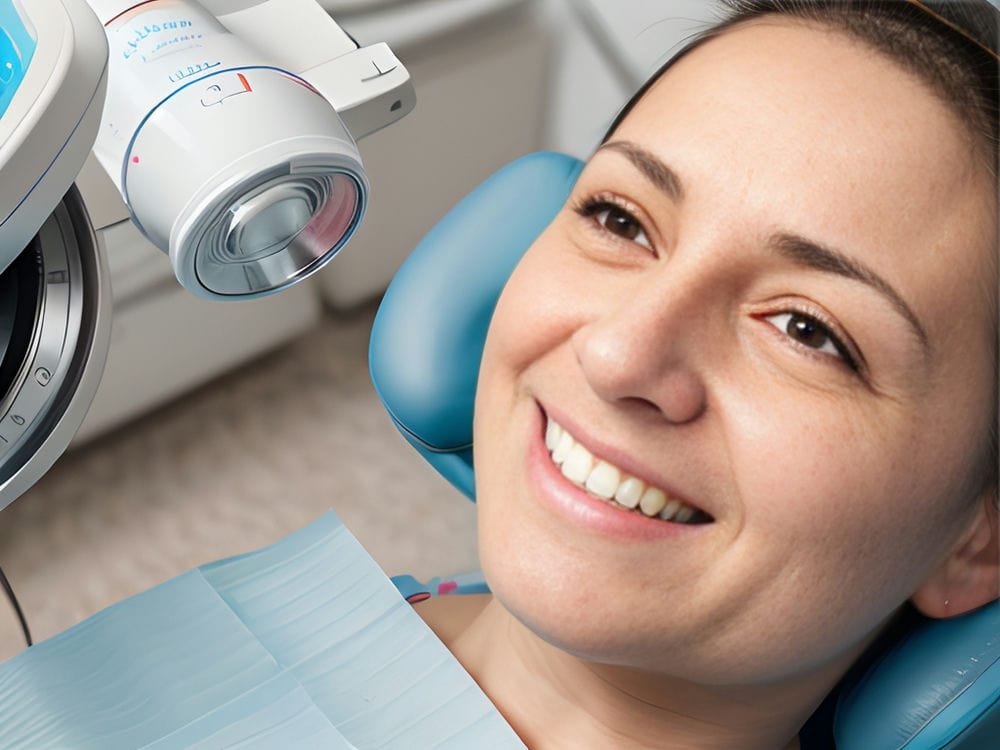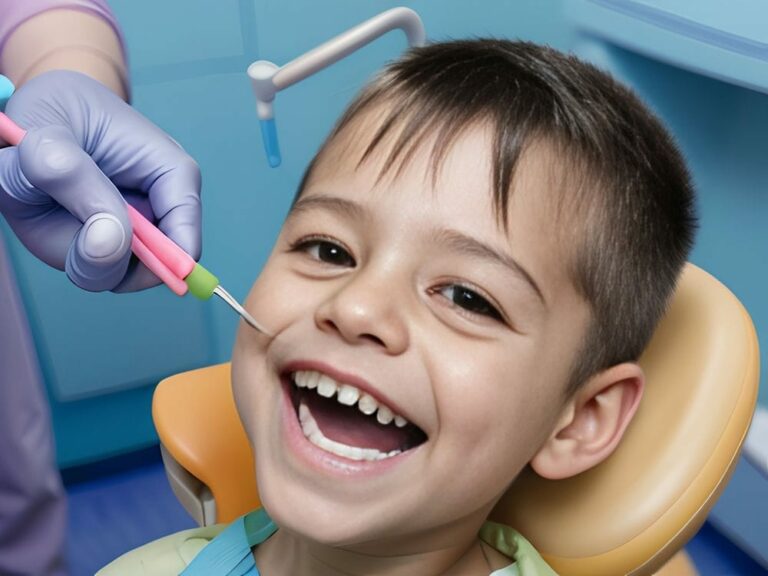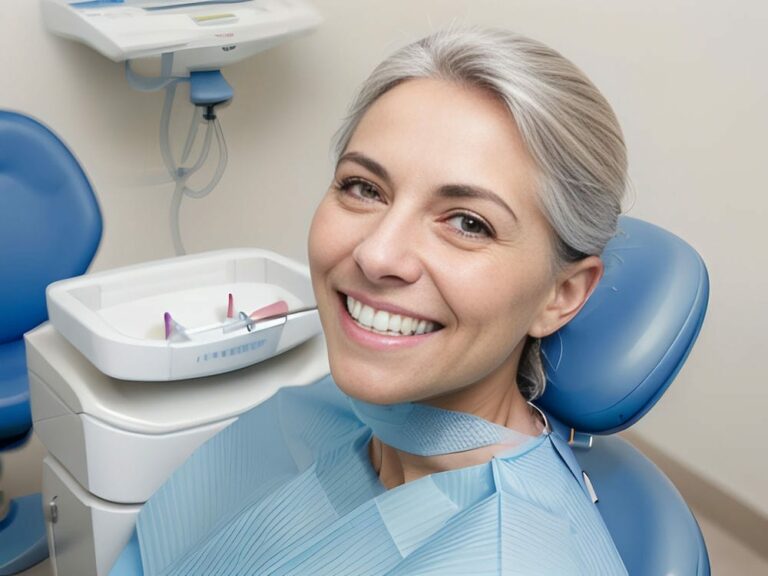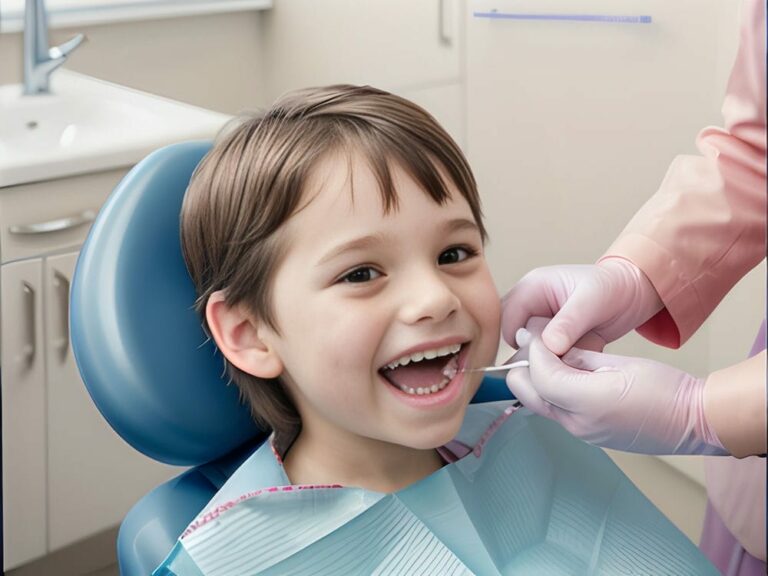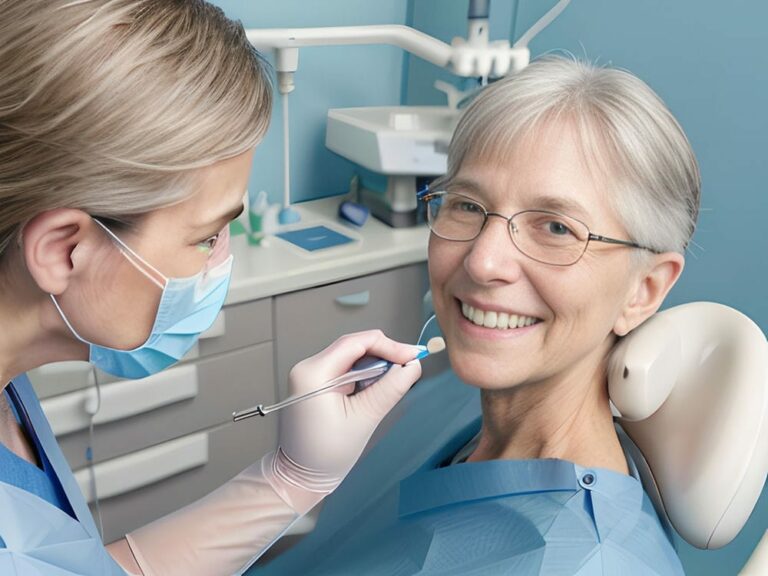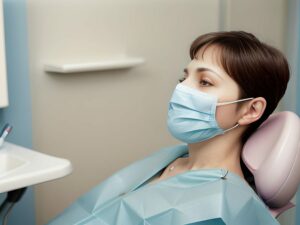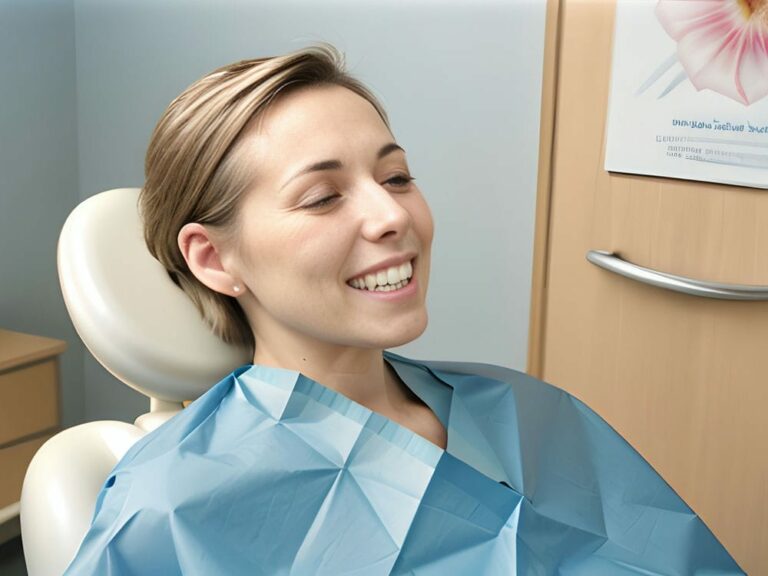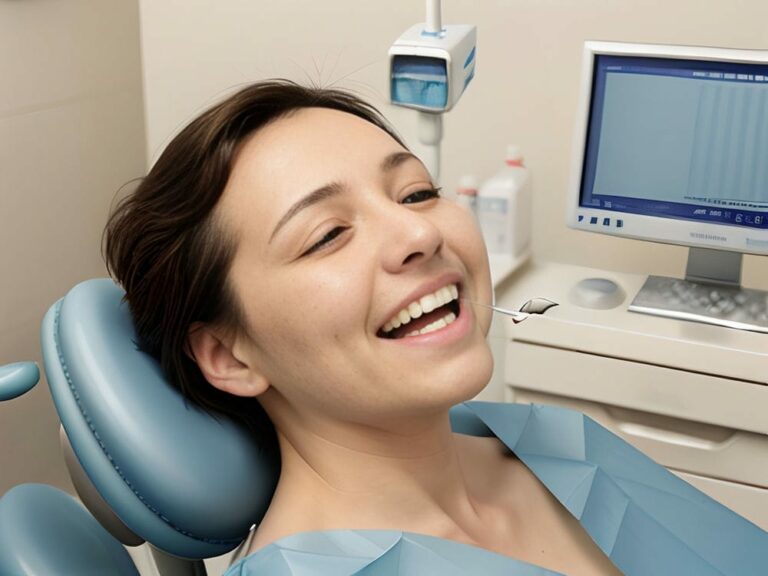The Rise of Digital Dentistry: Enhancing Cosmetic Procedures with Virtual Tools
The rise of digital dentistry has revolutionized the field of cosmetic dentistry, offering new virtual tools that enhance procedures and improve the overall patient experience. Intraoral scanning, virtual treatment planning, and digital impressions are just a few examples of these cutting-edge technologies that have become essential in modern cosmetic dental practices.
One of the most significant advancements in digital dentistry is intraoral scanning. This technology allows dentists to capture highly accurate 3D images of a patient’s teeth and gums using a handheld scanner. These scans can be used to create virtual models that can be manipulated and analyzed from various angles, providing a comprehensive view of the patient’s oral condition. Intraoral scanning eliminates the need for messy traditional impressions, making it more comfortable for patients while improving accuracy and efficiency for dentists.
Virtual treatment planning is another key tool in digital dentistry that enhances cosmetic procedures. With this technology, dentists can digitally simulate different treatment options and outcomes before starting any physical work on a patient’s teeth. This allows both the dentist and the patient to visualize potential results, discuss possible modifications, and make informed decisions about the best course of action. By integrating virtual treatment planning into their practice, cosmetic dentists can ensure that they achieve optimal aesthetic results while meeting each patient’s unique expectations.
Digital impressions are also transforming cosmetic dentistry by replacing traditional putty-based impressions with highly precise digital scans. These scans capture every detail of a patient’s teeth and gums with remarkable accuracy, resulting in restorations that fit perfectly and look natural. Digital impressions not only save time but also offer increased comfort for patients who no longer have to endure uncomfortable trays filled with impression material.
Intraoral scanning, virtual treatment planning, and digital impressions are just a few examples of how virtual tools have enhanced cosmetic dental procedures. These technologies provide more accurate diagnoses, better treatment planning, improved communication between dentist and patient, and ultimately superior outcomes. As digital dentistry continues to evolve, it holds the promise of further advancing cosmetic dentistry and delivering even more exceptional results.
Exploring the World of Virtual Reality in Cosmetic Dentistry
The world of virtual reality (VR) is expanding its reach in cosmetic dentistry, offering exciting possibilities for both dentists and patients. Teledentistry, remote dental consultations, and virtual dental appointments are just a few examples of how VR is transforming the way cosmetic dental procedures are performed.
Teledentistry allows patients to connect with their dentist remotely, eliminating the need for in-person visits for routine check-ups or consultations. Through video conferencing and digital communication platforms, patients can receive expert advice and recommendations from the comfort of their own homes. This not only saves time and travel expenses but also provides a convenient option for patients who may have difficulty visiting the dental clinic due to mobility issues or other constraints.
Remote dental consultations have become especially valuable during times when physical distancing measures are in place, such as during a pandemic. Dentists can assess patients’ oral conditions through video calls, discuss treatment options, and provide guidance on oral hygiene practices. Remote consultations also enable dentists to triage cases and determine if an in-person visit is necessary or if minor issues can be resolved remotely.
Virtual dental appointments take teledentistry a step further by allowing dentists to perform certain procedures virtually using VR technology. For example, dentists can use VR tools to digitally plan orthodontic treatments or simulate smile makeovers before starting any physical work on a patient’s teeth. This enables patients to see what their new smile will look like and make informed decisions about their treatment.
The integration of virtual reality into cosmetic dentistry has opened up new possibilities for improving patient access to care and enhancing the overall experience. Teledentistry, remote dental consultations, and virtual dental appointments offer convenience, efficiency, and personalized treatment options. As technology continues to advance, it is likely that we will see even more innovative uses of virtual reality in cosmetic dentistry in the future.
The Power of Augmented Reality in Creating Perfect Smiles
Virtual dental education and virtual reality training have revolutionized the way dentists learn and practice cosmetic dentistry. With the help of VR technology, dental students can now immerse themselves in realistic virtual environments to gain hands-on experience and refine their skills before working on real patients. This not only enhances their understanding of complex procedures but also boosts their confidence when performing them in real-life scenarios.
Digital smile simulation is another powerful tool that utilizes augmented reality to create perfect smiles. Dentists can use specialized software to digitally design a patient’s ideal smile based on their preferences and facial features. This allows patients to visualize the final outcome before committing to any treatment, ensuring they are satisfied with the results. Additionally, dentists can make necessary adjustments or modifications during the simulation process to achieve the desired aesthetic outcome.
The integration of these virtual tools in cosmetic dentistry has transformed the learning experience for dental professionals and improved patient outcomes. Virtual dental education and VR training provide a safe environment for dentists to practice complex procedures, reducing the risk of errors or complications during actual treatments. Digital smile simulation empowers patients by giving them a clear understanding of what they can expect from their cosmetic dental procedures, leading to higher levels of satisfaction.
As technology continues to advance, virtual tools will play an increasingly crucial role in cosmetic dentistry. The possibilities for enhancing procedures and improving patient experiences are endless. By embracing these innovative technologies, dentists can provide more personalized and precise treatments while ensuring optimal results for their patients’ smiles.
Revolutionizing Diagnosis and Treatment Planning with 3D Imaging Technology
Virtual smile makeovers, virtual dental models, and digital dentures are just a few of the innovative tools that are revolutionizing the way cosmetic dentistry is practiced. These virtual tools allow dentists to accurately diagnose and plan treatments using 3D imaging technology, providing more precise and personalized care for their patients.
One of the key benefits of virtual smile makeovers is the ability to show patients a realistic preview of their potential new smiles. Using specialized software, dentists can digitally manipulate images of a patient’s teeth and gums to demonstrate how various cosmetic procedures will enhance their appearance. This not only helps patients make informed decisions about their treatment options but also allows them to have realistic expectations about the final results.
In addition to virtual smile makeovers, virtual dental models are invaluable in treatment planning. Dentists can scan a patient’s mouth using intraoral scanners or cone beam computed tomography (CBCT) scans to create highly accurate 3D models of the teeth and surrounding structures. These virtual models enable dentists to analyze the patient’s oral health in great detail, identify any underlying issues, and plan treatments with utmost precision.
Digital dentures are another game-changing advancement in cosmetic dentistry. Traditionally, creating dentures involved multiple appointments and time-consuming manual adjustments. With digital dentures, however, the process becomes much faster and more accurate. Dentists can use computer-aided design (CAD) software and 3D printers to create custom-fit dentures that perfectly match each patient’s unique oral anatomy.
The integration of these virtual tools in cosmetic dentistry has truly transformed the diagnosis and treatment planning process. By utilizing 3D imaging technology, dentists can provide more accurate assessments of their patients’ oral health and offer personalized treatment plans tailored to their specific needs. Virtual smile makeovers, virtual dental models, and digital dentures are paving the way for more efficient and effective cosmetic dental procedures – ultimately leading to improved patient outcomes and satisfaction.
Improving Patient Communication and Engagement through Virtual Consultations
Bad gateway.
Designing the Perfect Smile: An Introduction to Digital Smile Design
Digital orthodontics and virtual dental conferences have revolutionized the field of cosmetic dentistry, providing dentists with innovative tools to enhance procedures and improve patient experience. With the use of digital orthodontics, dentists can now create precise treatment plans and simulations that allow patients to visualize their final results before undergoing any procedures. This not only helps patients make informed decisions about their treatment options, but also increases their confidence in the outcome.
Virtual dental conferences have also played a significant role in advancing cosmetic dentistry. These online platforms provide dentists with opportunities to learn from experts in the field, stay updated on the latest techniques and technologies, and connect with colleagues from around the world. By attending virtual conferences, dentists can expand their knowledge base and gain valuable insights that can be applied to their own practices, ultimately improving patient care.
In addition to digital orthodontics and virtual dental conferences, the use of digital dental records has become increasingly popular in cosmetic dentistry. Digital records allow for easy access and sharing of patient information, eliminating the need for physical paperwork and reducing administrative tasks. Dentists can now store patient data electronically, including X-rays, photographs, and treatment plans, ensuring accuracy and efficiency in managing patient records.
Overall, digital orthodontics, virtual dental conferences, and digital dental records have transformed cosmetic dentistry by enhancing procedures and improving patient engagement. With these virtual tools at their disposal, dentists are able to provide more personalized treatment options while empowering patients to actively participate in their own care. As technology continues to advance in the field of cosmetic dentistry, it is clear that these virtual tools will continue to play a crucial role in shaping the future of dental practice.
Streamlining Production Processes with Computer-Aided Design (CAD)
Virtual reality dental experiences and virtual dental clinics have emerged as innovative tools in the field of cosmetic dentistry, revolutionizing the way procedures are performed and improving patient experience. These virtual tools allow dentists to create immersive and interactive experiences for their patients, enabling them to visualize their treatment plans and final results in a realistic virtual environment. By using virtual reality dental experiences, dentists can effectively communicate treatment options to patients, helping them make informed decisions and feel more confident about their dental procedures.
Virtual dental clinics have also made significant advancements in cosmetic dentistry by providing convenient and accessible dental care to patients. Through these online platforms, patients can consult with dentists remotely, eliminating the need for physical visits and reducing barriers to accessing dental services. Virtual dental clinics offer a range of services such as virtual consultations, digital treatment planning, and follow-up appointments through video conferencing. This not only saves time for both patients and dentists but also allows for continuous monitoring of treatment progress without the need for frequent in-person visits.
The integration of virtual reality dental experiences and virtual dental clinics has streamlined production processes in cosmetic dentistry by optimizing efficiency and accuracy. Computer-aided design (CAD) software enables dentists to digitally design restorations such as crowns, veneers, and implants with precision. These digital designs can then be sent to milling machines or 3D printers for fabrication, ensuring consistent quality and reducing human errors. By utilizing CAD technology, dentists can enhance the speed of production while maintaining high standards of craftsmanship.
With the advent of virtual tools like virtual reality dental experiences and virtual dental clinics, cosmetic dentistry is entering a new era of personalized care and convenience. Patients can now actively participate in their own treatment journey through realistic visualizations and remote consultations. Dentists benefit from improved efficiency in production processes while delivering high-quality results. As technology continues to advance, these virtual tools will undoubtedly play an increasingly vital role in shaping the future of cosmetic dentistry.
From Design to Reality: Computer-Aided Manufacturing (CAM) in Cosmetic Dentistry
The integration of virtual tools in cosmetic dentistry has not only improved patient experience but also streamlined production processes. Computer-aided design (CAD) software is a key component in enhancing efficiency and accuracy in the field. By digitally designing restorations such as crowns, veneers, and implants, dentists can ensure precise results and reduce human errors.
With CAD technology, dentists can create digital designs that are then sent to milling machines or 3D printers for fabrication. This allows for consistent quality and speeds up the production process. By eliminating manual steps and relying on computer-generated designs, dentists can optimize efficiency without compromising craftsmanship.
In addition to improving production processes, CAD technology also enhances communication between dentists and patients. Through virtual reality dental experiences, patients can visualize their treatment plans and final results before undergoing any procedures. This helps them make informed decisions and feel more confident about their dental treatments.
As cosmetic dentistry continues to evolve, the integration of virtual tools like CAD software will play an increasingly vital role in delivering personalized care and convenience. Dentists can harness the power of technology to provide efficient and accurate treatments while ensuring patient satisfaction. The future of cosmetic dentistry is bright with these advancements, promising enhanced outcomes for both practitioners and patients alike.
Harnessing the Potential of Virtual Tools for Enhanced Patient Experience
Cosmetic dentistry has greatly benefited from the integration of virtual tools, revolutionizing both the procedures and patient experience. One key tool in this field is computer-aided design (CAD) software, which allows dentists to digitally design restorations such as crowns, veneers, and implants. By relying on CAD technology, dentists can ensure precise results and reduce human errors, enhancing efficiency and accuracy in their work.
With CAD technology, the process of creating dental restorations becomes much more streamlined. Dentists can create digital designs that are then sent to milling machines or 3D printers for fabrication. This eliminates manual steps and ensures consistent quality in the production process. By relying on computer-generated designs, dentists can optimize efficiency without compromising craftsmanship.
In addition to improving production processes, CAD technology also enhances communication between dentists and patients. Through virtual reality dental experiences, patients can visualize their treatment plans and final results before undergoing any procedures. This helps them make informed decisions and feel more confident about their dental treatments. The ability to see a digital representation of their future smile allows patients to actively participate in the treatment planning process.
As cosmetic dentistry continues to evolve, the integration of virtual tools like CAD software will play an increasingly vital role in delivering personalized care and convenience. Dentists can harness the power of technology to provide efficient and accurate treatments while ensuring patient satisfaction. With these advancements, the future of cosmetic dentistry looks promising with enhanced outcomes for both practitioners and patients alike. The possibilities that virtual tools offer in terms of improving procedures and enhancing the patient experience are endless.
The Future of Cosmetic Dentistry: Embracing the Digital Revolution
The future of cosmetic dentistry is undoubtedly intertwined with the digital revolution. As technology continues to advance, dentists have more opportunities than ever to enhance their procedures and improve the patient experience. The integration of virtual tools in cosmetic dentistry opens up a world of possibilities for customization, efficiency, and accuracy.
One area where virtual tools are making a significant impact is in smile design and simulation. With the help of computer software, dentists can create digital models of patients’ teeth and gums, allowing them to visualize different treatment options and outcomes. This not only helps patients make informed decisions about their dental work but also allows dentists to plan and execute procedures with greater precision.
Another exciting development is the use of virtual reality (VR) technology in cosmetic dentistry. VR allows patients to immerse themselves in a virtual environment where they can explore different treatment options and experience what it would be like to have a new smile. This immersive experience helps patients feel more confident and at ease before undergoing any procedures.
The future of cosmetic dentistry lies in embracing these digital advancements. By harnessing the power of virtual tools, dentists can deliver personalized care while improving efficiency and accuracy. The possibilities are endless, from 3D-printed restorations to AI-assisted diagnostics. As technology continues to evolve, so too will the field of cosmetic dentistry, leading to enhanced outcomes for both practitioners and patients alike.
FAQs
Q: What are virtual tools in cosmetic dentistry?,
A: Virtual tools in cosmetic dentistry refer to digital technologies and software that enhance dental procedures and improve the overall patient experience.,
Q: How do virtual tools enhance cosmetic dental procedures?,
A: Virtual tools can improve cosmetic dental procedures by allowing dentists to create precise treatment plans, simulate the desired outcome, and communicate effectively with patients.,
Q: Are virtual tools only used for planning cosmetic dental procedures?,
A: No, virtual tools are used throughout the entire cosmetic dental process, from planning to execution and even in follow-up appointments.,
Q: What are some examples of virtual tools used in cosmetic dentistry?,
A: Examples of virtual tools in cosmetic dentistry include digital smile design software, intraoral scanners, computer-aided design/computer-aided manufacturing (CAD/CAM) systems, and virtual reality simulations.,
Q: How do intraoral scanners contribute to the cosmetic dental process?,
A: Intraoral scanners capture highly accurate 3D images of a patient’s mouth, allowing dentists to create virtual models and plan treatments with precision.,
Q: Can virtual tools help patients visualize their desired dental outcome?,
A: Yes, virtual tools such as digital smile design software and virtual reality simulations enable patients to see a digital representation of their desired dental outcome before the actual procedure takes place.,
Q: Do virtual tools improve patient communication in cosmetic dentistry?,
A: Virtual tools enhance patient communication by providing visual aids and clear explanations of treatment plans, helping patients understand the process and make informed decisions.,
Q: Are virtual tools used in all types of cosmetic dental procedures?,
A: While virtual tools are commonly used in many cosmetic dental procedures, their usage may vary depending on the specific treatment and the dentist’s preference.,
Q: Can virtual tools be used for cosmetic dental consultations remotely?,
A: Yes, virtual tools can be utilized for remote cosmetic dental consultations, allowing patients and dentists to discuss treatment options and visualize outcomes without the need for an in-person visit.,
Q: Do virtual tools have any benefits for dentists in cosmetic dentistry?,
A: Virtual tools offer numerous benefits for dentists, including improved treatment planning, increased accuracy, enhanced patient satisfaction, and the ability to showcase their work digitally.








